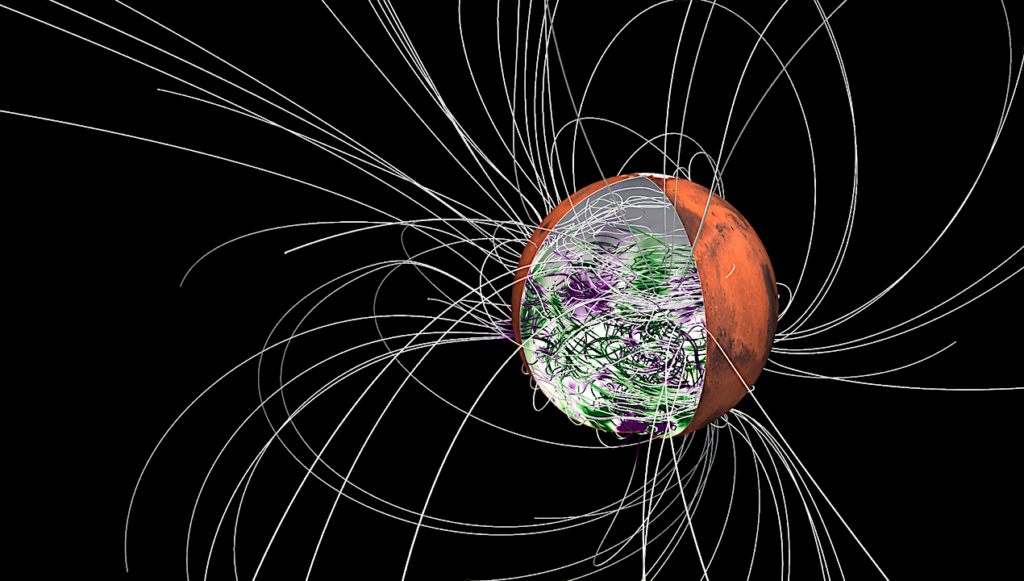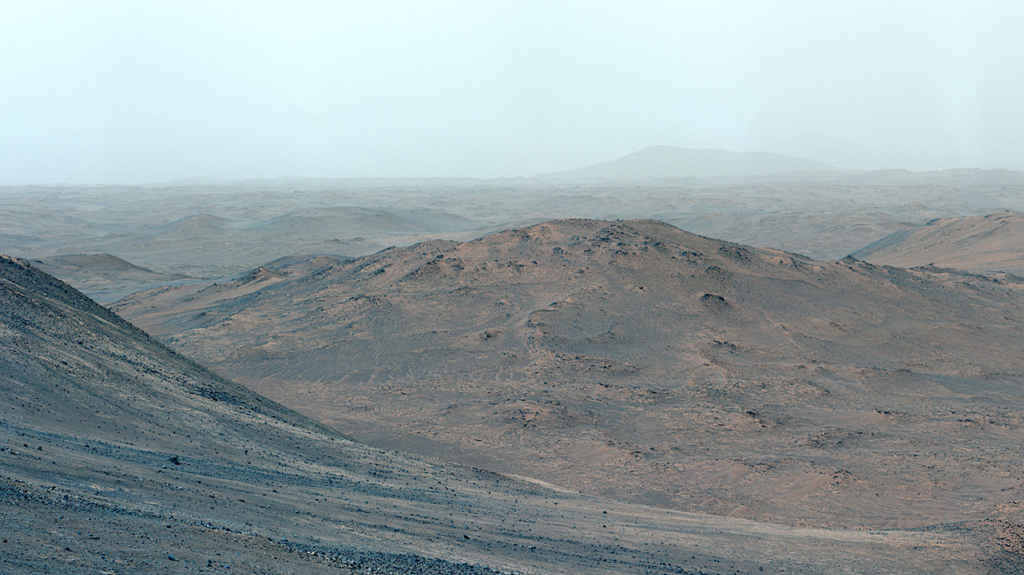Geochemistry Constrains Global Hydrology On Early Mars

Ancient hydrology is recorded by sedimentary rocks on Mars. The most voluminous sedimentary rocks that formed during Mars’ Hesperian period are sulfate-rich rocks, explored by the Opportunity rover from 2004-2012 and soon to be investigated by the Curiosity rover at Gale crater.
A leading hypothesis for the origin of these sulfates is that the cations were derived from evaporation of deep-sourced groundwater, as part of a global circulation of groundwater. Global groundwater circulation would imply sustained warm Earthlike conditions on Early Mars. Global circulation of groundwater including infiltration of water initially in equilibrium with Mars’ CO2 atmosphere implies subsurface formation of carbonate. We find that the CO2 sequestration implied by the global groundwater hypothesis for the origin of sulfate-rich rocks on Mars is 30-5000 bars if the Opportunity data are representative of Hesperian sulfate-rich rocks, which is so large that (even accounting for volcanic outgassing) it would bury the atmosphere.
This disfavors the hypothesis that the cations for Mars’ Hesperian sulfates were derived from upwelling of deep sourced groundwater. If, instead, Hesperian sulfate-rich rocks are approximated as pure Mg-sulfate (no Fe), then the CO2 sequestration is 0.3-400 bars. The low end of this range is consistent with the hypothesis that the cations for Mars’ Hesperian sulfates were derived from upwelling of deep sourced groundwater.
In both cases, carbon sequestration by global groundwater circulation actively works to terminate surface habitability, rather than being a passive marker of warm Earthlike conditions. Curiosity will soon be in a position to discriminate between these two hypotheses. Our work links Mars sulfate cation composition, carbon isotopes, and climate change.
Edwin S. Kite, Mohit Melwani Daswani
(Submitted on 18 Jul 2019)
Comments: Accepted by Earth & Planetary Science Letters. 5 figures
Subjects: Earth and Planetary Astrophysics (astro-ph.EP); Geophysics (physics.geo-ph)
Cite as: arXiv:1907.08166 [astro-ph.EP] (or arXiv:1907.08166v1 [astro-ph.EP] for this version)
Submission history
From: Edwin Kite
[v1] Thu, 18 Jul 2019 17:15:20 UTC (2,614 KB)
https://arxiv.org/abs/1907.08166
Astrobiology, Astrogeology








